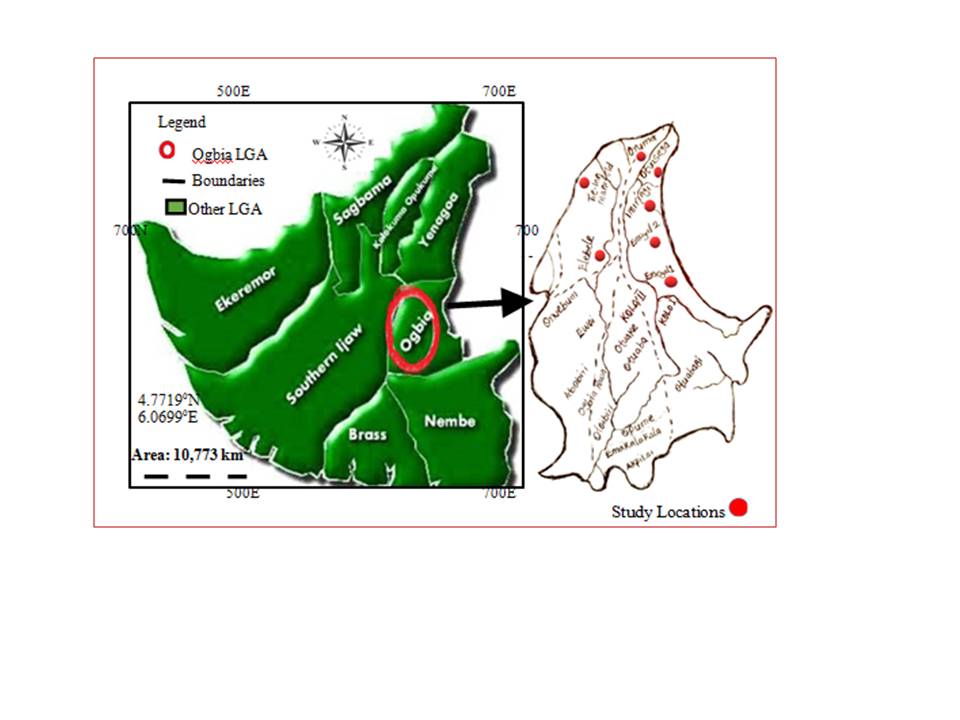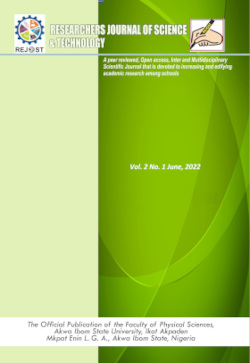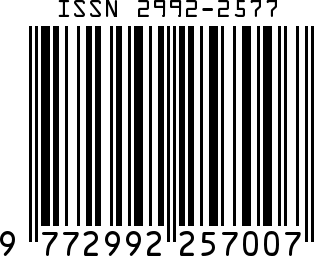Evaluation of Background Ionizing Radiation (BIR) Due to Oil Spills Activities in Some Select Communities in Bayelsa State, Southern Nigeria
Keywords:
BIR, AEDE, ELCR, ICRP, CommunitiesAbstract
Measurements of background ionizing radiation (BIR) in six select communities and one oil spill site in Bayelsa State, Southern Nigeria were carried out to assess the BIR status of these communities in order to quantify the radiological health risk posed to residents. Direct measurements of radiation were employed using a well-calibrated Geodetic Positioning System (etrex 10 Garmin) and a Digilert Nuclear Radiation Monitor. Results obtained from averaging the exposure rates across the six communities and one oil spill site (1 - 7) in this order Elebele (1), Emeyal 1 (2), Emeyal 2 (3), Imiringi (4), Otuasega (5), Oruma (6) and the oil spill site (Tie-Inn manifold at Kolo-Creek) (7) revealed 0.008 mRh-1, 0.009 mRh-1, 0.009 mRh-1, 0.008 mRh-1, 0.008 mRh-1, 0.007 mRh-1 and 0.10 mRh-1 correspondingly. These results, when juxtaposed with the International Commission on Radiological Protection (ICRP) value, were lower compared with the accepted magnitude of 0.013 mRh-1. Also, the mean absorbed dose rates from the study areas (Communities and oil spill site 1 - 7) as estimated were 70.47 nGyh-1, 76.56 nGyh-1, 74.82 nGyh-1, 68.7 nGyh-1, 68.73 nGyh-1, 63.51 nGyh-1 and 90.48 nGyh-1, correspondingly where 90.48 nGyh-1 was a bit above the ICRP limit with 1.16 nGyh-1. Computed values of Annual Effective Dose Equivalence (AEDE) for outdoor exposure at areas 1 -7 were 0.11 mSvy-1, 0.12 mSvy-1, 0.11 mSvy-1, 0.10 mSvy-1, 0.11 mSvy-1, 0.10 mSvy-1 and 0.14 mSvy-1 in that order. The mean excess lifetime cancer risk (ELCR) calculated and obtained from the following areas Elebele, Emeyal 1, Emeyal 2, Imiringi, Otuasega, Oruma and oil spill site gave 0.27 x 10-3 mSvy-1, 0.29 x 10-3 mSvy-1, 0.29 x 10-3 mSvy-1, 0.26 x 10-3 mSvy-1, 0.26 mSvy-1, 0.24 x 10-3 mSvy-1and 0.35 x10-3 mSvy-1respectively. However, ELCR measured at Emeyal 1and 2 were exactly the same as the ICRP value, unlike the oil spill site, which value exceeded the recommended value of 0.29x10-3 mSvy-1. The obtained values for BIR in all the study areas were lower than acceptable limit given by ICRP whereas the absorbed dose computed were below the recommended rate except at the Tie-Inn manifold, which was higher. The average AEDE calculated in the entire area were within the safe limit. However, the ELCR as estimated were below ICRP benchmark of 0.29x10-3 mSvy-1 in 4 areas and exactly the same value at 2 locations, while the limit was exceeded at the Tie-Inn manifold near Kolo-Creek. The ELCR result showed that BIR in the three locations was capable of causing radiological health risks to the residents in the near future owing to petroleum activities in the areas.
References
Ademola, J.A. & Ehiedu, S.I. (2010). Radiological Analysis of 40K. 226Ra and 232Th in Fish, Crustacean and Sediment from Fresh and Marine Water in Oil Exploration Area of Ondo State, Africa Journal Biomedical Resources. 13:99-106.
Agbalagba O. E (2017). Assessment of excess lifetime cancer risk from gamma radiation levels in Effurun and "Warri city of Delta state, Nigeria, Journal of Taibah University for Science, 11:3,367-380.
Agbalagba, O.E., Avwiri, G.O and Ononugbo, C.P. (2016). G1S mapping of impact of industrial activities on the terrestrial background ionizing radiation levels of Ughelli metropolis and its environs, Nigeria. Environmental Earth Sciences 75(21): 1-10.
Avwiri, G.O., & Esi O. E. (2014). Assessment of Background Ionization Radiation of Oil Spillage Site at Obodo Creek in Gokana L.G.A of Rivers State, Nigeria. British Journal of Applied Science & Technology 4(36): 5072- 5079
Avwiri, G.O., & Agbalagba, E.O., (2012). Studies on the Radiological Impact of Oil and Gas Activities in Oil Mineral Lease 30 (OML2) Oil Fields in Delta State, Nigeria. Journal of Pet. Environmental Biotechnology, 3(2), 1-8
Babatunde, B.B., Sikoki, F.D; Avwiri, G. O., & Chad-Umoreh, Y. E. (2019). Review of the status of radioactivity profile in the oil and gas producing areas of the Niger delta region of Nigeria, Journal of Environmental Radioactivity 202, 66-73
Chukwuocha E.O., & Enyinna, P. I. (2010). Radiation Monitoring of Facilities in some oil wells in Bayelsa state and Rivers State, Nigeria: Sciatica Africana, 9(1); 107-111.
Kayakoku, H., & Dogru, M. (2017). Radioactivity analysis of soil samples taken from the western and northern shores of Lake Van, Turkey, Applied Radiation and Isotopes 128; 231-236
Kola-Olusanya, A., & Mekuleyi, G.O. (2018). Chapter 14 – The Eco-Economics of Crude Oil Exploration in Nigeria, Editor(s): Prince E. Ndimele, The Political Ecology of Oil and Gas Activities in the Nigerian Aquatic Ecosystem, Academic Press, 191-198, ISBN 9780128093993, https://doi.org/10.1016/B978-0-12-809399-3.00014-8.
Liu, W. Lu, X., Chen, C., & Zhao, C; (2012). Radioactivity level of soil around Baqiao coal-fired power plant in China, Radiation Physics and Chemistry 81; 1827-1832
Rafique M., Saeed U.R., Muhammad B., Wajid A., Iftikhar A., Khursheed A.L., & Khalil A.M. (2014). Evaluation of excess life time cancer-risk from gamma dose rates in Jhelum valley, J. Radiat. Res. Appl. Sci. 7; 29-35.
Rajesh E.A. (2006). Radon exhalation rate from sand samples from the newly discovered high background radiation areas at Erasma beach placer deposit of Orissa. Indian Radiation measurement: 43: 508-511
Taskin, H., Karavus, M., Ay, P., Topuzoghi, A., Hindiroglu, S., & Karaha, G. (2009). Radionuclide concentrations in soil and lifetime cancer risk due to the gamma radioactivity in Kirlareli, Turkey. Journal of Environmental Radioactivity. 100 49-53.
UNSCEAR, (2000). Sources and Effects of Ionizing Radiation. United Nations Scientific Committee on the Effects of Atomic Radiation, United Nations, New York
UNSCEAR, (1993). Sources and Biological Effects. United Nations Scientific Committee on the Effect of Atomic Radiation Report to the General Assembly, with Annexes. UN sales publications; New York

Downloads
Published
How to Cite
Issue
Section
License
Copyright (c) 2023 Researchers Journal of Science and Technology

This work is licensed under a Creative Commons Attribution-NonCommercial-NoDerivatives 4.0 International License.




